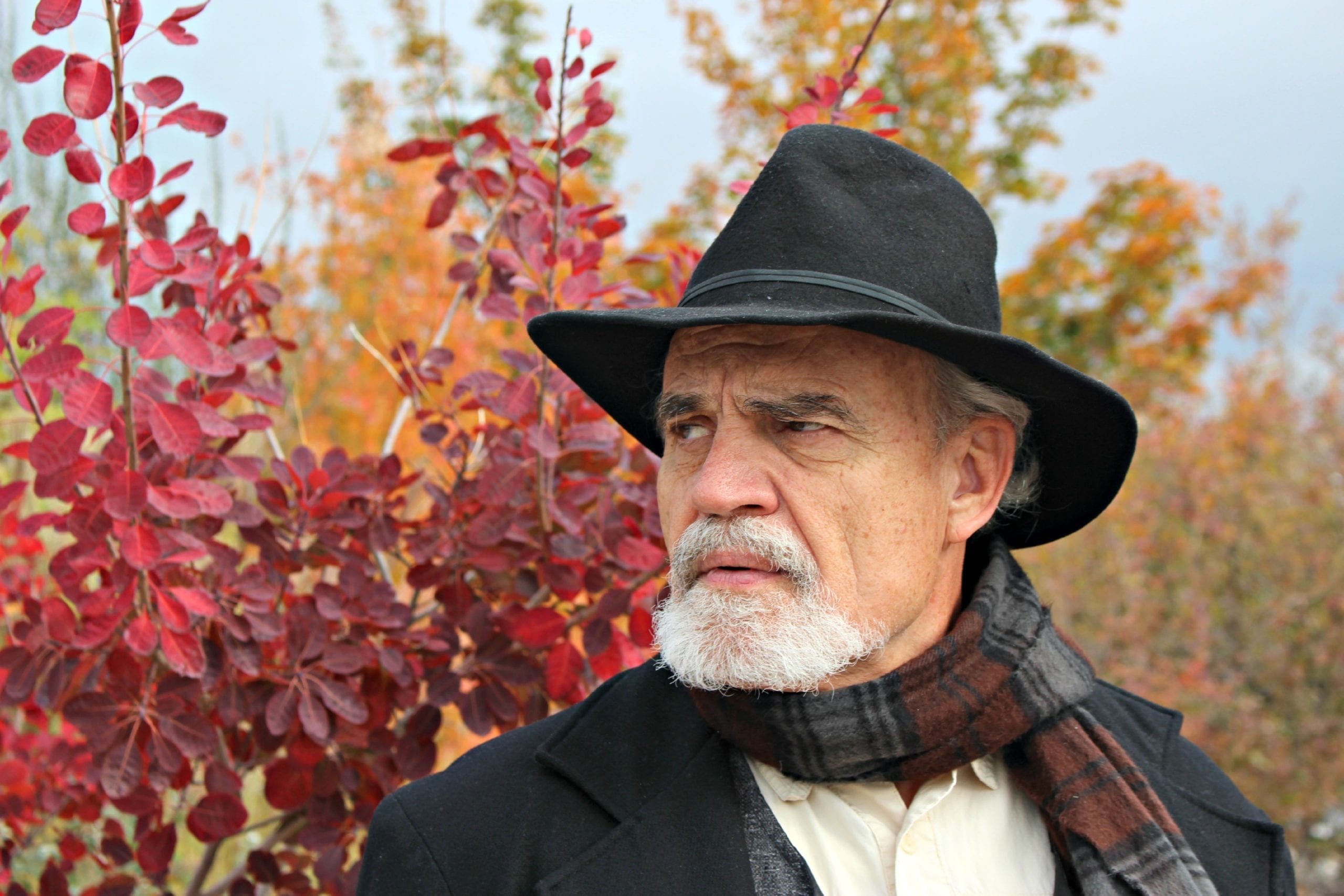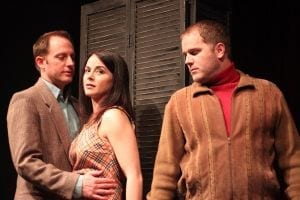OREM — In history, truth is often stranger, more exciting, more tragic, and more miraculous than any fiction that could be manufactured. This is especially true, perhaps, for stories of the Mormon exodus of the nineteenth century, when thousands of people left their homes and traveled across land and sea to settle West in the Salt Lake Valley. The Trail of Dreams, a musical about that exodus, written by James Arrington, Marvin Payne, and Steven Kapp Perry (who also wrote the music) uses historical documents to convey the pathos and triumph of those Mormon pioneers that risked all to make that trek. Directed by James Arrington and produced by SCERA and Utah Valley University, this production of The Trail of Dreams hits all the right notes in its story of faith and doubt and human attempts to control eternal destiny.
The musical opens with Marvin Payne as John Brown (his real great great grandfather), who guided Mormon pioneers on their exodus, making the trek more than a half-dozen times. He is just beginning a dream in which he relives the experiences from his different years as a trail guide all at once. Pioneers from 1848 and 1856 come side by side in the visions of his slumber, an act of dramaturgy that enables the high and low points of all Mormon treks to come together in a single move westward to Salt Lake that takes place during the course of the musical. The “characters” in the play, who are real historical figures, help him open his dream, each stepping forward to take a journal of their experiences from the front of the stage. Also assisting him on his journey of memory is Angela Hopewell, played by Dianna Graham, a self-described “midwife of sorts” who turns out to be an angel of death (and new life) and who ushers various characters in the play from their earthly lives to their heavenly ones.
It is Angela that serves as antagonist to John Brown’s protagonist. It is she that he fights as he tries to preserve the life of the pioneers under his charge, to control their destiny in spite of the omnipotent power that controls all. But, ultimately, as John Brown relives the tragic deaths that occurred during the Mormon exodus from cold, hunger, sickness, and accident, he comes to realize their place in the story of a “whole people.” By the end of the play, he willingly dances with Angela as the characters once again step forward with their journals to emphasize how their individual stories contribute to the legacy of the LDS Church.
As a piece of contemporary Mormon theatre, The Trail of Dreams could also be considered a contributing story to a larger narrative. In using passages and paraphrases from the journals of actual pioneers, it joins other plays about nineteenth century Mormonism such as City of Joseph: An Historical Musical of Nauvoo and the Manti Mormon Miracle Pageant. It also joins the ranks of such Mormon musicals as Utah: America’s Most Spectacular Outdoor Musical Drama in its attempt to tell the Mormon story in the quintessential genre of the American musical where humor and pathos run parallel and into each other. There are the typical romance numbers with husbands and wives dreaming of a better future and professing their love such as “A Box for my Dream,” and “I’ll Love Whatever’s Left of You.” So, too, there are the rather incongruous humorous numbers strategically placed for comic relief, such as “Oxology,” a number in which the female characters pretend to be delightfully stubborn oxen that are uncooperative when the menfolk attempt to yolk and direct them.
The music throughout The Trail of Dreams is satisfactory and pleasant to the ears, though there are, perhaps, only two or three numbers that are memorable in terms of lyric and score, of which “Oh, Zion!” stands out. It is the performance of the songs and the book that make this musical worth hearing and seeing. The great passion of Payne as John Brown is met and matched by the rest of the cast that owns the legacy of the characters they represent. Shannon Eden as Caroline Grant and Chris Higbee as Jedediah Grant, for example, bring a perfect pitch of devotion to their faith and to each other. In addition, the ensemble cast comes together to portray a myriad of historical figures, changing quickly from one to the next with spirit and speed that leaves no lull in the production.
James Arrington’s direction is, in fact, very brisk. The two-and-a-half hour show moves speedily across the plains and over the Rocky Mountains. There is also considerable attention to detail, a good bit of physicality, ample humor, and strategic stillness. He writes that The Trail of Dreams is the last show he is directing prior to his retirement, and it does give off an aura of an opus. Visually, Arrington is assisted by the excellent, minimal stage design by Stephen Purdy in which the dream-world of John Brown is created by simple earth-toned blocks moved and stacked by characters as necessary with the stage bordered by great sheets of paper, stylized as aged pages of journals. Within this border characters come to life in costumes capably designed by Carla Summers in the manner and suggestion of the mid-nineteenth century. Lastly, Kristen Bradley’s choreography is fitted for the song and space, simple and unassuming.
In a musical like The Trail of Dreams, it would be remiss not to mention the extent to which the audience plays an important part in the performance experience. I am a non-Mormon, but I have deep Mormon roots, and my ancestors made the exodus portrayed on stage. I was greatly aware that the great majority of the audience was viewing the play as their own historical and religious inheritance. This often happens in historical Mormon theatre, and when it does, there is always an added energy to the performance as spectators become co-creators in the production. In the world of theatre idealism, this is often the goal, and if you have never felt this experience, your chance may be now. The Trail of Dreams at SCERA has much to offer.








